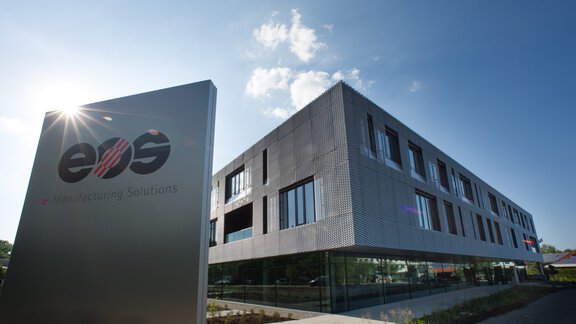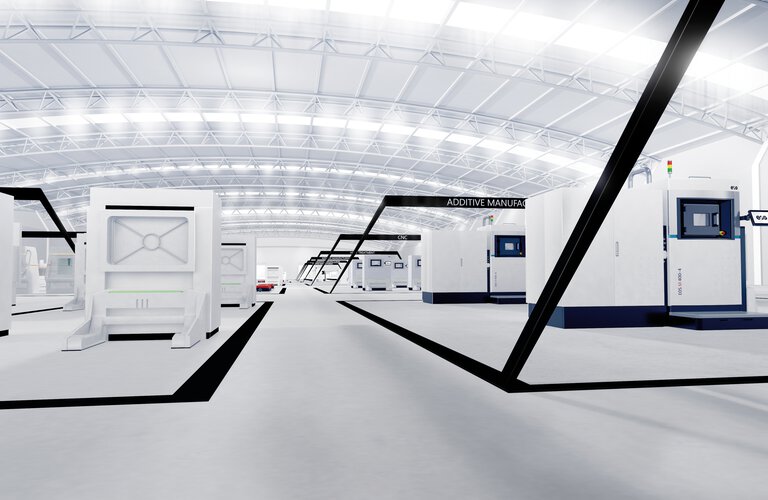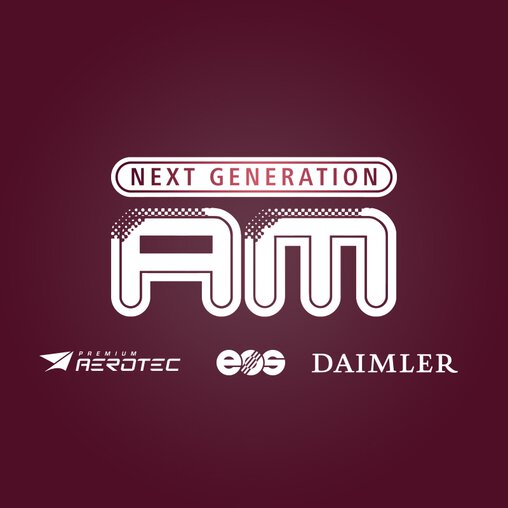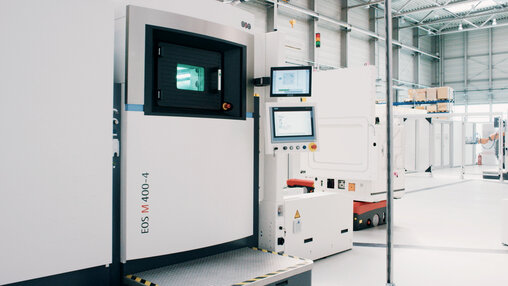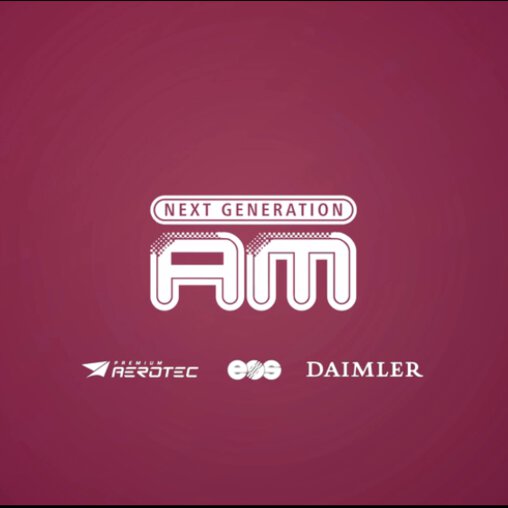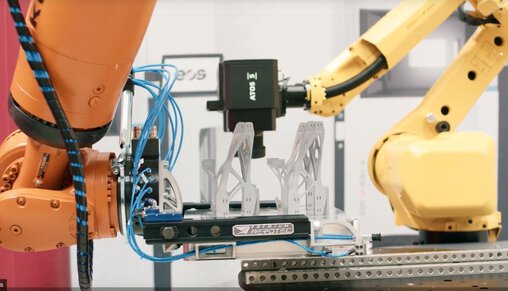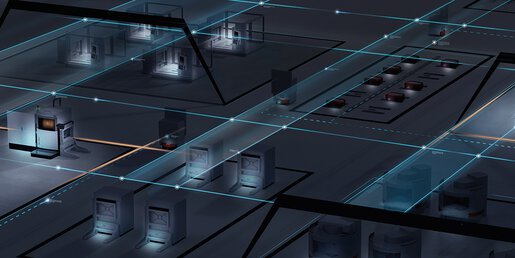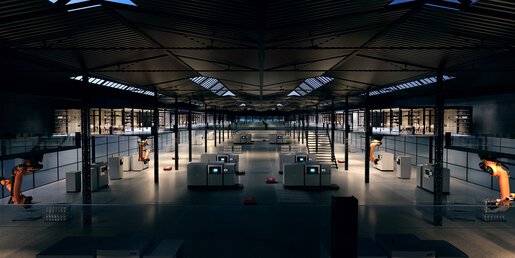NextGenAM – the Future, Here Today Industrial 3D Printing. Fully Automated.
With the NextGenAM project, in collaboration with Premium AEROTEC and Daimler, EOS has implemented a pilot process chain tailored to industrial series production. Every process is automated, from conveyance of the metal powder to post-processing after the build process. The highlight is products for different customers can be manufactured in parallel. Unlike classical production lines, which process projects one by one, there is no need for production to unfold sequentially.
The Integrated Process Chain – Industry 4.0 With 3D Printing NextGenAM: How It Works
The heart of the 3D printing production cell consists of a scalable additive production chain that is fully automated, right up to mechanically sawing the printed parts from the support plate. This means that no manual work is required, from data preparation and central powder supply to the build process itself with additive manufacturing and heat treatment, quality assurance, and separation of parts from the support plate. The technical core of the system is the four-laser system EOS M 400-4 for metal-based industrial 3D printing. The parts are conveyed smoothly throughout the production line by a driverless transport system and robots.
The EOS control center provides comprehensive reporting on all machines and production processes, as well as complete traceability of build jobs and parts – a fundamental aspect of a functional series production system – and more.
The Results
A continuous 3D data chain with integrated quality management makes this production system one of the first applications of the Industry 4.0 benchmark of the future. Production is completely scalable, the factory’s capacity can be expanded by duplicating the production lines. This promises even more savings in the future when the unit quantities are increased. The current pilot system is capable of automatically manufacturing parts at series production quality. The new technology line at Premium AEROTEC is already being used to manufacture parts for Daimler today. For example, the first type of spare part manufactured by Premium AEROTEC is already in use in trucks. The part in question is a holder for a diesel truck engine.
Industry 4.0 NextGenAM – a Scalable Solution for Digital Series Production
The entire production chain is self-controlled without an operator from an autonomous centralized control center. To achieve this, all of the machines are connected on a network. The order data are transferred to the control center, which determines the priority of each build job and assigns it to a 3D printer.
The production system is not closed in any direction – there are automatable interfaces on every side. This means that production can be integrated into the manufacturer’s higher-level systems (MES, ERP, SAP), enabling automated order processing and integration with design data or connections to other manufacturing processes and stations. Additional post-processing steps can be integrated, depending on the parts and the customer requirements.
The EOS control center also provides a foundation for self-optimizing production based on digital twins. The underlying idea is to allow the digitally networked machines to apply intelligent algorithms to create a self-optimizing network, thus digital intelligence is entering the production chain.
What does this mean?
High-performance systems record all data from production until the finished parts and visualize them in a database in real time. Each created part is represented in the database by a digital twin that contains all relevant data about its parameters (location, ambient conditions, material, machine settings, process parameters, costs, and more). For example, after ten weeks of production, you’ll be able to compare various parameters across 100,000 digital twins and experiment with simulations to identify any potential for improvements. The system reproduces the specific impact of specific changes on the results, revealing the best path for self-optimization in the eleventh week.
A final but essential step is the digital consolidation of design, manufacturing and lifecycle know-how. By equipping parts with sensors that record the relevant information during actual usage, it’s possible to create a sort of “lifecycle diary.” Even though parts and products can be tested before delivery, there’s no way to simulate knowledge of real-life conditions.
